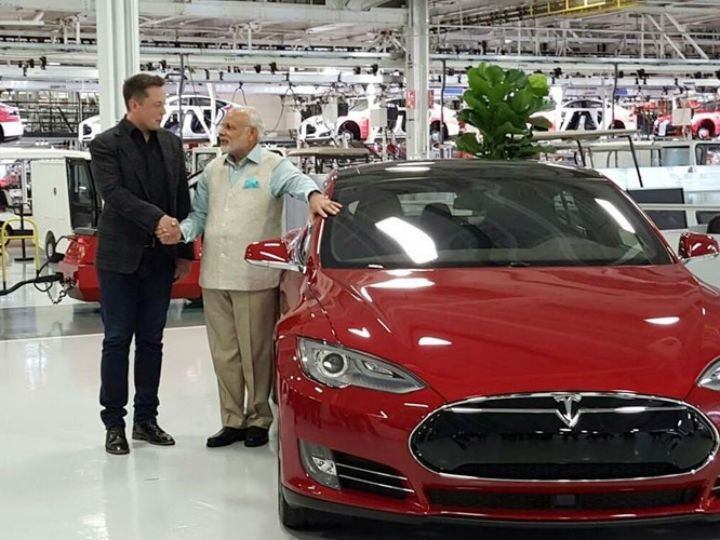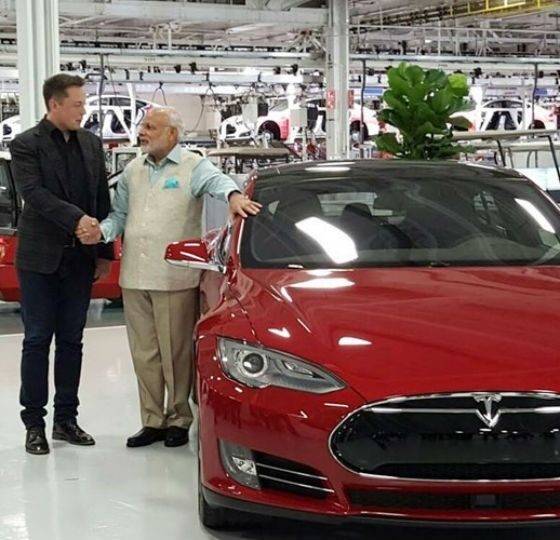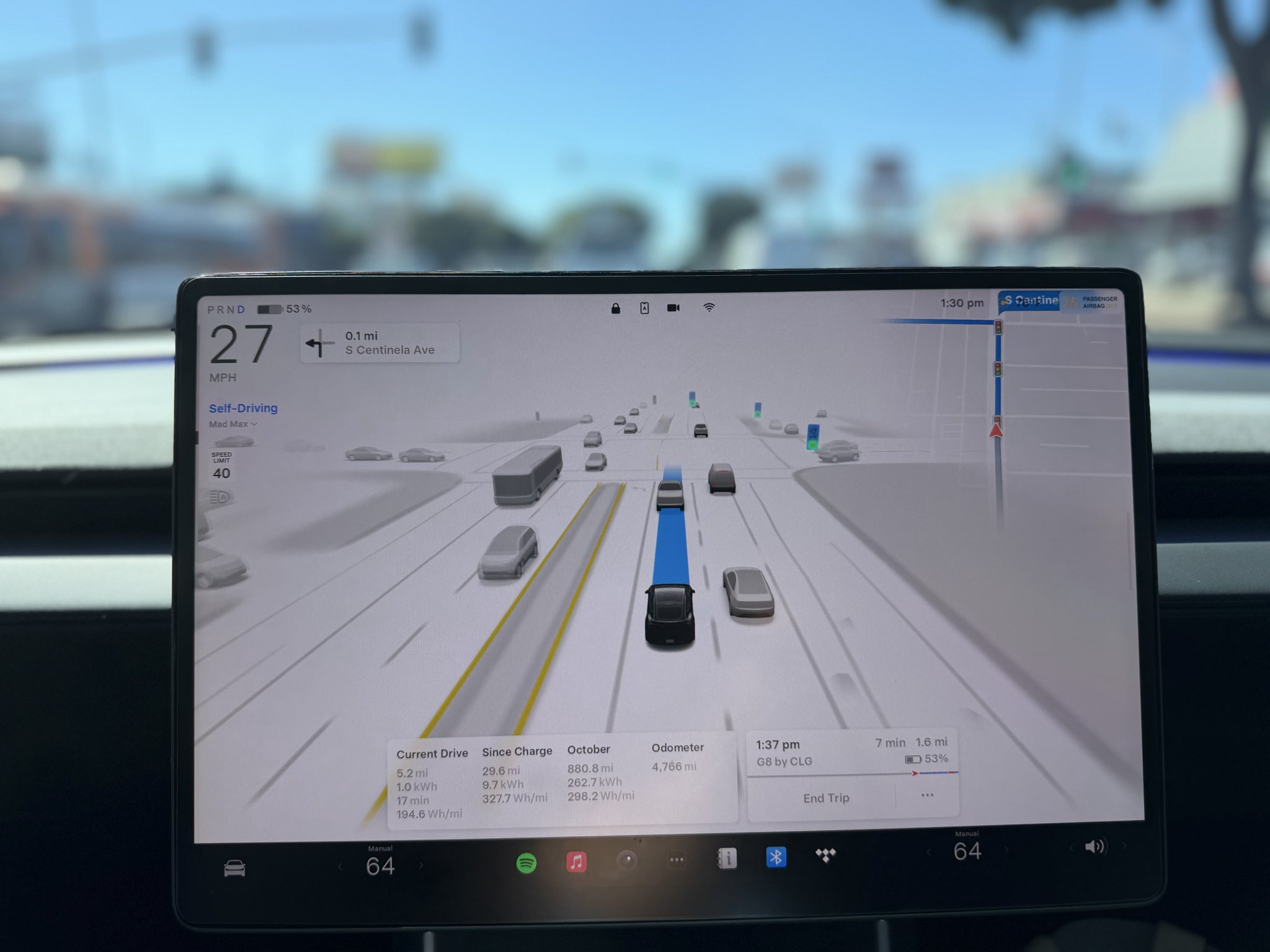

News
Opinion: Tesla and India is the right thing at the wrong time
Tesla and India will not be working together any time soon, as new reports now indicate that Tesla has pulled its team responsible for entrance into the Indian market to other regions. Tesla and India might be a powerful one-two punch in the future, but in 2022, the two are just the right thing at the wrong time.
When Tesla first started making moves toward entering the Indian automotive market, there was a lot of excitement. The unbelievable potential of a partnership between the world’s leading electric car company and a government that primarily focuses on domestic manufacturing efforts, mainly due to the Make in India initiative, had people buzzing. However, there were still hoops to jump through. Any person with any sort of knowledge about India and cars knows that it is an expensive place to own one, especially if it was not built there. Getting cars from outside of India into the country doubles the cost of the vehicle on most occasions due to import duties. This is when Tesla started to realize how difficult this whole process might be.
Tesla places its India entry on hold after failing to secure lower import taxes: report
In routine negotiations, even with companies and governments, there is always a brief standoff period to see who will budge first. The hypothetical game of chicken can be magnified when dealing with two large entities, but eventually, something happens where someone makes a move, and things start to come together. I thought a great, recent, and relevant example of this would be the Elon Musk-Twitter buyout, where, as the board of the platform mozied over the Tesla CEO’s offer, new developments were few and far between, as expected. Nothing was going to move forward until someone budged.
The issue is that sometimes people choose not to budge because their needs in a particular deal are non-negotiable. When the needs of both sides are non-negotiable, it complicates the entire ordeal, and this is what made the Tesla-India deal stagnate: Two large entities that had specific requirements to make something happen. Neither was asking for a small thing, so it is not necessarily unreasonable that Tesla put its plans for India on hold.
Tesla needed to test demand for its cars. It would only be able to do this by building them in Fremont, California, Austin, Texas, Brandenburg, Germany, or Shanghai, China, and then shipping them to India. The problem with this system was it would not be an accurate representation of what Tesla might be able to sell in the market, as the vehicles would still be subjected to massive import duties that would double the cost of the car in some cases. Only a small percentage of the population would be able to afford that, and with very little EV infrastructure in India, it made the company’s products even less attractive. Tesla was effectively stuck between a rock and a hard place because it had an interest in building and selling cars in India, it just needed to confirm that the people of India wanted to buy the cars. Indian government officials rarely offered commentary that was indicative of a willingness to budge.
India wanted Tesla to commit to building a new Gigafactory in their country, which would align with the government’s focus on domestic manufacturing efforts and would likely give officials enough to pull back import duties for Tesla. However, Tesla could not commit to this: there was no indication that demand would be high enough to justify an entire factory, and Tesla was not sure it would be able to export vehicles from the Indian factory to other countries. Given the economic situations across the world during the past two years due to the COVID-19 pandemic, neither entity would be able to budge from their needs.
India and Tesla were the right thing, just at the wrong time. Given the extreme demands that both Tesla and Indian officials needed, it was best to not beat a dead horse any longer and move on from the potential partnership, at least temporarily. Tesla does have a lot of potential in India, but it cannot justify purchasing massive land plots for a new facility, it cannot justify spending millions more on showrooms and service centers, and it can not adequately test the want for its vehicles with massive import taxes trailing behind every car sent to the market.
Try again in a few years, hopefully.
I’d love to hear from you! If you have any comments, concerns, or questions, please email me at joey@teslarati.com. You can also reach me on Twitter @KlenderJoey, or if you have news tips, you can email us at tips@teslarati.com.

News
Czech Deputy excited for Tesla FSD, hints at Transport Committee review
The ANO party lawmaker shared his thoughts about FSD in a post on social media platform X.

Martin Kolovratník, a Czech Republic Chamber of Deputies member, has expressed his excitement for Tesla’s Full Self-Driving (FSD) after an apparent constituent called for a quick approval for the advanced safety system.
The ANO party lawmaker, who drives both diesel and EV, shared his thoughts about the matter in a post on social media platform X.
The official’s initial statements
Kolovratník kicked off the exchange with a post outlining his coalition’s efforts to scrap highway toll exemptions for electric vehicles and plug-ins starting in 2027.
“Times have changed. Electric vehicles are no longer a fringe technology, but a full-fledged part of operations. And if someone uses the highway network, they should follow the same rules as everyone else. That’s the basis of fairness,” he wrote.
He emphasized equity over ideology, noting his personal mix of diesel and electric driving. “For this reason, there is no reason to continue favoring one technology at the expense of another… It’s not about ideology, it’s about equal conditions. That’s why we clearly agreed within the new coalition: the exemption for electric vehicles and plug-ins will end in 2027. The decision is predictable, understandable, and economically sound.”
Tesla FSD enthusiasm
The conversation pivoted to Tesla’s FSD when X user @robotinreallife, who seems to be one of the official’s constituents, replied that other matters are more important than ending highway exemptions for EVs.
“I’m happy to pay for the highway, but I have a question about a much more fundamental matter: The Netherlands will approve the operation of Tesla FSD in February 26, a technology that has been proven to reduce accidents. The Czech Republic has the option to immediately recognize this certification. Do you plan to support this step so that we don’t unnecessarily delay?” the X user asked.
Kolovratník responded promptly, sharing his own excitement for the upcoming rollout of FSD. “I know about it. I like it and it seems interesting to me. Once we set up the committees and subcommittees, we’ll open it right away in that transport one. Thanks for the tip, I’ll deliver the report,” the official noted in his reply on X.
Kolovratník’s nod to FSD hints at the system’s potentially smooth rollout to Czechia in the coming year. With the Netherlands possibly greenlighting FSD (Supervised) in early 2026, Kolovratník’s commitment could accelerate cross-border certification, boosting FSD’s foray into Europe by a notable margin.
News
Tesla Model 3 named New Zealand’s best passenger car of 2025
Tesla flipped the switch on Full Self-Driving (Supervised) in September, turning every Model 3 and Model Y into New Zealand’s most advanced production car overnight.

The refreshed Tesla Model 3 has won the DRIVEN Car Guide AA Insurance NZ Car of the Year 2025 award in the Passenger Car category, beating all traditional and electric rivals.
Judges praised the all-electric sedan’s driving dynamics, value-packed EV tech, and the game-changing addition of Full Self-Driving (Supervised) that went live in New Zealand this September.
Why the Model 3 clinched the crown
DRIVEN admitted they were late to the “Highland” party because the updated sedan arrived in New Zealand as a 2024 model, just before the new Model Y stole the headlines. Yet two things forced a re-evaluation this year.
First, experiencing the new Model Y reminded testers how many big upgrades originated in the Model 3, such as the smoother ride, quieter cabin, ventilated seats, rear touchscreen, and stalk-less minimalist interior. Second, and far more importantly, Tesla flipped the switch on Full Self-Driving (Supervised) in September, turning every Model 3 and Model Y into New Zealand’s most advanced production car overnight.
FSD changes everything for Kiwi buyers
The publication called the entry-level rear-wheel-drive version “good to drive and represents a lot of EV technology for the money,” but highlighted that FSD elevates it into another league. “Make no mistake, despite the ‘Supervised’ bit in the name that requires you to remain ready to take control, it’s autonomous and very capable in some surprisingly tricky scenarios,” the review stated.
At NZ$11,400, FSD is far from cheap, but Tesla also offers FSD (Supervised) on a $159 monthly subscription, making the tech accessible without the full upfront investment. That’s a game-changer, as it allows users to access the company’s most advanced system without forking over a huge amount of money.
News
Tesla starts rolling out FSD V14.2.1 to AI4 vehicles including Cybertruck
FSD V14.2.1 was released just about a week after the initial FSD V14.2 update was rolled out.

It appears that the Tesla AI team burned the midnight oil, allowing them to release FSD V14.2.1 on Thanksgiving. The update has been reported by Tesla owners with AI4 vehicles, as well as Cybertruck owners.
For the Tesla AI team, at least, it appears that work really does not stop.
FSD V14.2.1
Initial posts about FSD V14.2.1 were shared by Tesla owners on social media platform X. As per the Tesla owners, V14.2.1 appears to be a point update that’s designed to polish the features and capacities that have been available in FSD V14. A look at the release notes for FSD V14.2.1, however, shows that an extra line has been added.
“Camera visibility can lead to increased attention monitoring sensitivity.”
Whether this could lead to more drivers being alerted to pay attention to the roads more remains to be seen. This would likely become evident as soon as the first batch of videos from Tesla owners who received V14.21 start sharing their first drive impressions of the update. Despite the update being released on Thanksgiving, it would not be surprising if first impressions videos of FSD V14.2.1 are shared today, just the same.
Rapid FSD releases
What is rather interesting and impressive is the fact that FSD V14.2.1 was released just about a week after the initial FSD V14.2 update was rolled out. This bodes well for Tesla’s FSD users, especially since CEO Elon Musk has stated in the past that the V14.2 series will be for “widespread use.”
FSD V14 has so far received numerous positive reviews from Tesla owners, with numerous drivers noting that the system now drives better than most human drivers because it is cautious, confident, and considerate at the same time. The only question now, really, is if the V14.2 series does make it to the company’s wide FSD fleet, which is still populated by numerous HW3 vehicles.









